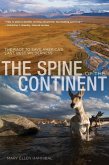This is a history of the moorlands and the part they have played in English and Welsh history over ten millennia. Ian Simmons draws on natural science, archaeology, social history and historical geography, as well as his own forty years of exploring and studying the moorlands. He describes their origins and how they changed under the impact of human and natural forces. He shows how perceptions of the moors have been influenced by writers, artists and the media, and how these perceptions have resulted in great changes in attitudes to their use and management. The moors provide grazing land, wood, water, recreation and scenery for people, and unique habitats for birds, mammals, insects, and plants. The book begins by offering a concise understanding of their physical and natural characteristics. It then moves quickly to an account of how hunter-gatherers of the Mesolithic period altered their surroundings using fire. It describes how millennia of agricultural production wrought distinctive moorland landscapes and how these in turn were affected and sometimes transformed by industrialization, deforestation, and changes in farming methods. The twentieth-century's renewed impetus for environmental management and conservation brings the story near to the present. The North Pennines, Dartmoor, and South Wales are the subject of detailed accounts that reveal the common characteristics of the moorlands as well as their marked contrasts. The author then offers a brief history of the moorlands in the artistic and literary imagination. Beyond the recent crises of overgrazing and the 2001 foot-and-mouth outbreak, Ian Simmons lays out some possible futures for the moors.








